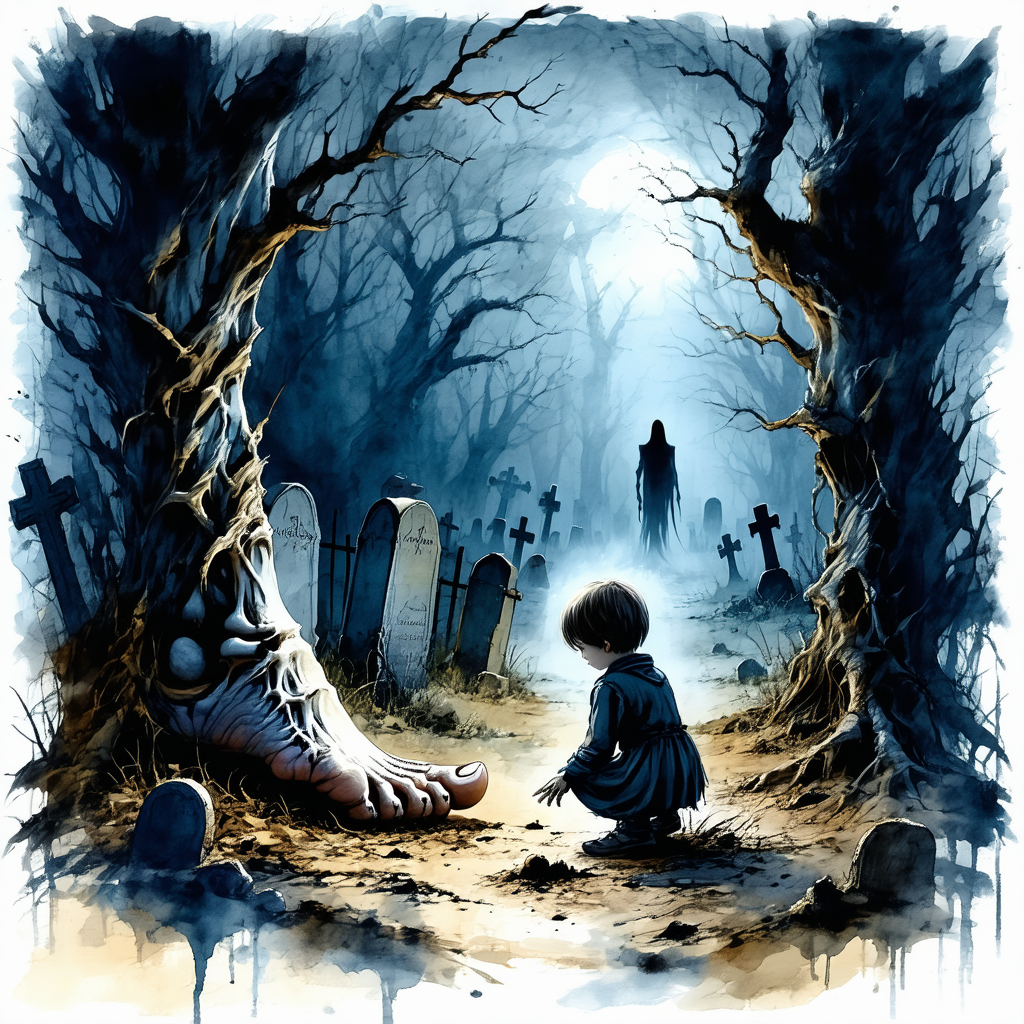The Legend Behind "Who Took My Toe?" – A Haunting Folk Tale Turned Song
The haunting folk song “Who Took My Toe?” has captivated audiences for generations, particularly around Halloween, where its chilling melody and spine-tingling lyrics bring a supernatural thrill to listeners young and old. This song, based on the classic folk tale known as “The Big Toe”, tells the tale of a young child who uncovers a mysterious toe buried in the ground, only to find themselves pursued by the owner of the toe—a ghostly figure demanding its return. The story taps into primal fears of the unknown and the supernatural, making it a memorable tale that has been passed down through oral tradition and adapted into chilling songs like “Who Took My Toe?”
The Origin of the Tale: “The Big Toe” Folk Legend
The folk tale “The Big Toe” is a classic in the tradition of American spooky stories and is believed to have roots in ancient folklore. Passed down through generations, “The Big Toe” has been a staple of ghost stories told around campfires, especially popularized in the United States. This story is most famously recounted in Alvin Schwartz’s collection, “Scary Stories to Tell in the Dark,“ which includes unsettling stories that are often derived from classic folklore and urban legends. In Schwartz’s version, the tale is a frightening combination of horror and suspense, capturing the mystery and terror of the supernatural.
In the story, a young child digging in the ground discovers a large, decayed toe and brings it home, where the family decides to cook it. However, as night falls, the child is haunted by the chilling refrain, “Who took my toe?” The ghostly figure of the toe’s owner draws nearer, searching for its lost limb and filling the night with dread. This storyline taps into the age-old themes of the macabre and the eerie unknown, elements that make it a perfect tale to adapt into song for a haunting atmosphere.
Transformation into the Song “Who Took My Toe?”
The song “Who Took My Toe?” brings this legend to life in a melodic form, preserving the eerie elements of the original tale while adding a musical depth that intensifies its haunting qualities. Using simple, suspenseful lyrics and a slowly building tension, the song follows the story’s original structure: a child discovers a toe, brings it home, and is soon pursued by the ghostly owner of the severed digit.
Each verse of the song represents a different stage of the encounter, from the initial discovery to the chilling realization that the ghost is near. The chorus—“Who took my toe?”—echoes through each verse like a ghostly refrain, capturing the dread and suspense that make the original tale so memorable. This musical adaptation is popular at Halloween, as it perfectly sets the mood for the season and reminds listeners of the classic ghost story.
Themes of Folklore and Horror: Why “Who Took My Toe?” Resonates
The story and song resonate with audiences because they combine the timeless fear of the unknown with the eerie atmosphere of supernatural folklore. In the song, the ghost is never fully seen, only heard and felt, creeping closer with each verse. This technique is highly effective in horror storytelling, as it lets listeners’ imaginations fill in the gaps, creating a personalized sense of terror. It mirrors other folklore elements, where things left unseen become even more terrifying.
In many cultures, the dead are believed to hold sway over the living if they are not given proper respect, and in some tales, they come back to retrieve what was taken from them. “The Big Toe” embodies this fear, as the ghost’s relentless search for its missing toe suggests that the dead will not rest until they have what’s rightfully theirs. The song taps into this fear with every repetition of “Who took my toe?” adding layers of suspense and eerie anticipation.
The Cultural Impact of “Who Took My Toe?” in American Folklore
“The Big Toe” and its adaptation into “Who Took My Toe?” have become embedded in American horror folklore, particularly as a story for children and young adults. It’s a favorite during Halloween and is often used in spooky storytelling sessions where traditional ghost tales are shared. The story’s inclusion in “Scary Stories to Tell in the Dark” cemented its place in horror culture, as the book itself is a landmark in spooky literature for young readers.
The legend has been adapted in various ways—through short films, animated adaptations, and of course, songs like “Who Took My Toe?” that distill the story’s essence into a chilling musical experience. As a Halloween favorite, it draws upon the classic elements of ghost stories, blending suspense, fear, and folklore into a hauntingly effective tale that appeals to children and adults alike.
Why “Who Took My Toe?” Remains a Halloween Classic
The tale and song of “Who Took My Toe?” embody the essence of Halloween—a celebration of the supernatural, the spooky, and the unknown. By combining folklore with music, the story takes on a life of its own, weaving fear and suspense into a format that is both entertaining and eerie. It reminds us of the power of oral tradition, where simple tales can evoke deep-seated fears and explore the unknown. Much like other horror classics, “Who Took My Toe?” taps into universal themes: the fear of the dark, the mystery of the supernatural, and the dread of what may lie just beyond our sight.
For those looking to experience a classic ghost story in musical form, “Who Took My Toe?” offers a thrilling entry into the world of folk horror. Its haunting melody and spine-tingling lyrics capture the essence of the original tale, preserving its place in Halloween tradition and continuing to frighten audiences who dare to listen.
So, this Halloween, gather around and let the chilling refrain of “Who took my toe?” echo through the night. Just remember—once you start singing, you may never know who, or what, might be listening.


